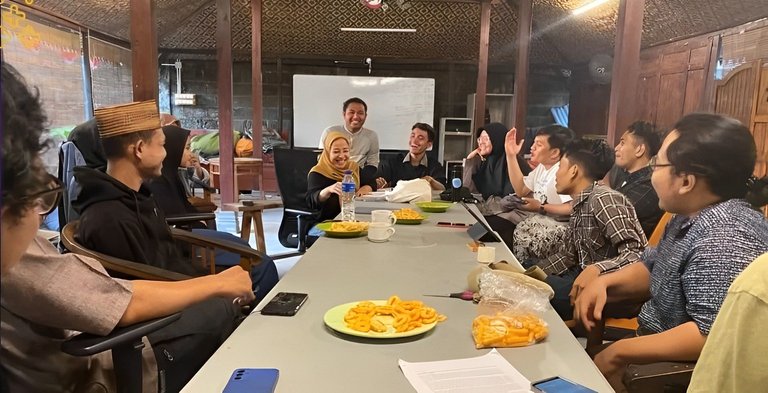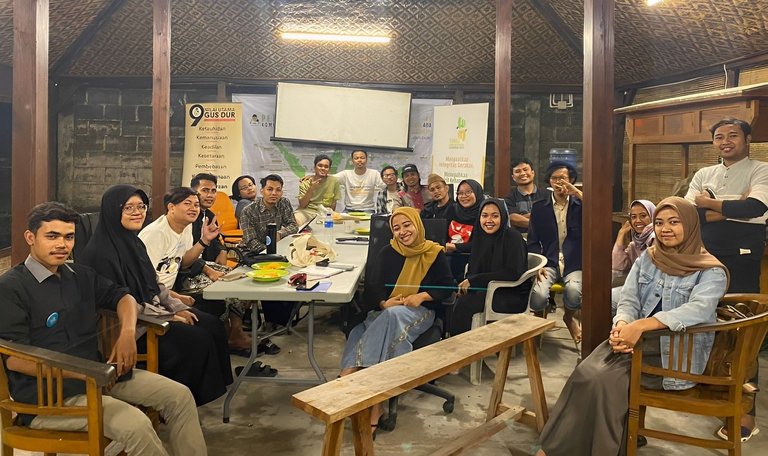A few days ago, ma professeure – my French teacher – asked me a question that made me think a lot. If she were to go to Indonesia, should she wear a hijab or not?
As a disclaimer, ma professeure is a muslimah – a Muslim woman – born in France and living in Strasbourg. She has never worn the hijab in France. It is not allowed in her job as a civil servant.
Still and all, she is considering wearing it when traveling to Indonesia because she believes it would be easier and better for a muslimah to do so here.
At the same time, I am suspicious of a line between this question and an incident where a Lamongan, Eastern Java teacher partially cut the hair of 19 ninth-grade female students for not wearing the inner hijab, known as ciput.
I responded to the question with the fact that even though Indonesia is for the most part Muslim, not all Muslim women wear the hijab. Despite occasional issues of "hijab enforcement" in educational institutions, it cannot represent Indonesia as a whole.

This issue is well related to the cangkruan (casual chat) dissecting the thoughts of Gus Dur in his article titled Kerudung dan Kesadaran Beragama – The Kerudung and Religious Awareness. This article was written in 1983 and first published in the Tempo Magazine's January 29, 1983 edition. In his article, Gus Dur used the term "Kerudung" to refer to the "hijab".

In the cangkruan last Friday 1st September 2023, one of the participants, Naufal Rafif Muzakki, presented his response after reading the article. He pointed out that during the Orde Baru era, when the article was written, wearing the hijab was prohibited, and those who wore it were stereotyped as kampungan – tacky, and unsophisticated.
However, during the reform era, the opposite became true, and not wearing the hijab was considered forbidden and seen as a lack of religious devotion.
Gus Dur highlighted that using the kerudung was common among Muslims but could also be a matter of "sensitivity." This means that in terms of definition, the jilbab, hijab, or kerudung itself has various interpretations, including whether it is obligatory or not.
Sensitivity to the diversity of perspectives on the kerudung should be handled wisely and with understanding. The case of high school students in Bandung being expelled from school for wearing hijab is an example of the conflicts that arise due to the lack of sensitivity to various forms of religious awareness among Muslim teenagers at the time.
What happened in Lamongan, where a teacher haphazardly cut the hair of several female students for not wearing the inner hijab (ciput), is also a form of insensitivity.
Even though the teacher has been "transferred" to the local Education Office, this conflict cannot be resolved through "disciplinary action" against school officials or students because such actions will not address the root of the problem.
Conflicts like these will continue to occur and must be resolved through dialogue and a better understanding of religious awareness.
The conversation continued with a response from Aslamiah, echoing Naufal's perspective. She added that the jilbab is no longer just a religious identity but has also entered the realm of capitalism. The hijab has become more than just a matter of faith; it has also become a marker of social and economic class identity.
Words like "jilbab," "hijab," "kerudung," and "khimar" are often used to describe head coverings for Muslim women.
Although in terms of terms, these words are often used interchangeably, depending on the model, material, and size of the head covering. However, what bothers me the most is the term "syar'i hijab."
Is there such a thing as a non-syari hijab? Or could it be that the term "syar'i" is only used for marketing purposes to make the hijab sell better? I have no idea.
Be that as it may, the most important thing that we need to reflect upon is that the hijab is agreed upon by many Muslim women as a means to cover their awrah, modesty.
This has sparked endless dialogues, such as Musdar's question, "What is meant by 'awrah'?" Kamalatan Nihaya, the catalyst for our discussion, argues that 'awrah' could be defined as "a sense of shame" or, I suspect, "a sense of disgrace." This makes sense linguistically, as 'hijab' means a covering. Does it mean a covering of shame (or disgrace)?
This becomes more interesting, when we look back at Aslamiah's previous statement, that the hijab has lost its essence. Nowadays, the jilbab is known more as a fashion style, leading to confusion and the term "hijab syar'i."
This inevitably led Wasil to ask a question to the female cangrukan attendees, "Why do you wear the hijab?". Ica then chimed in, "Because I was born into a family that wears it, and I have been using it since I was a child."
Going back to ma professeure's call into question at the beginning of this article, I believe that the hijab is a complex thing. On one hand, it could be a manifestation of religious devotion, social and economic identity, and even a fashion style.
On the other hand, the hijab could well symbolize resistance against stereotypes of being "kampungan," as mentioned by Gus Dur in his article.
I feel it is essential to respect each woman's choice to wear or not to wear the hijab. In the past era, wearing the hijab was considered "forbidden," leading to "being forced not to wear it." Today, quite the opposite, with many parties, including state educational institutions, and public schools "forcing students to wear it." Both forcing someone to wear it or not wearing it are equally intimidating.
On a similar note in France, there are various perspectives on whether the hijab is obligatory for women. Having said that, many imams assert that there is no doubt that it is obligatory.
In the end, I believe the decision to wear the hijab or not is a personal one. There is no one-size-fits-all answer, and every woman should decide what is best for her with full awareness. I look forward to your visit to Indonesia, ma professeure [mhg].